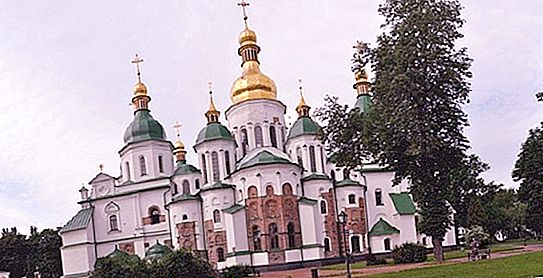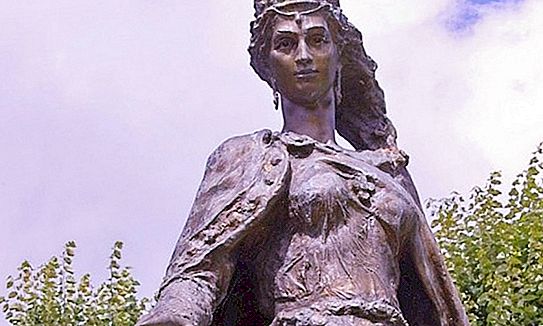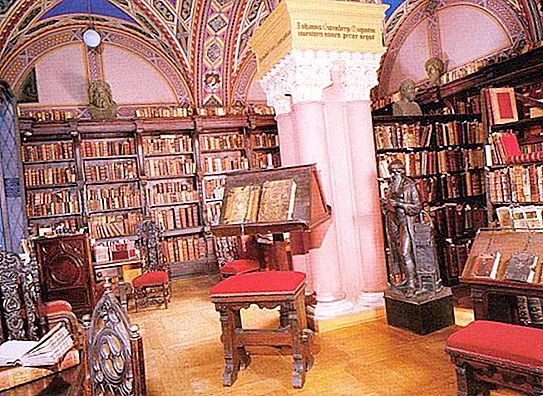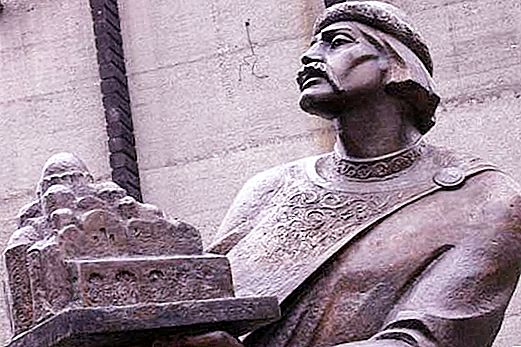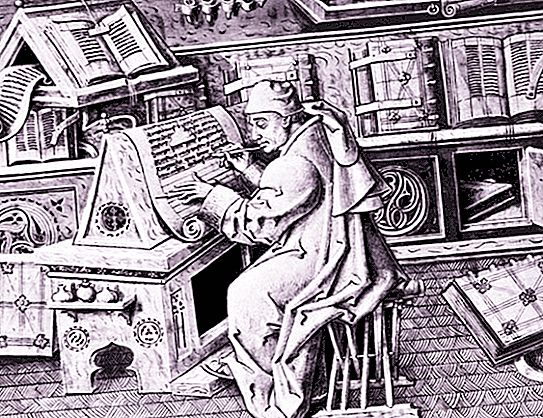The Grand Prince of Kiev, Yaroslav the Wise, became famous for his many achievements. It is known that the people loved him for his kind, fair attitude towards people. He did not seek to conquer new lands, but managed to increase the level of education in his possessions and improve the well-being of the people. Over the years of the reign of the prince, more books were written than during the entire existence of Kievan Rus. And so that all this handwritten possession could pass to the heirs, it was necessary to find a safe place for storage. This place was the library of Yaroslav the Wise.
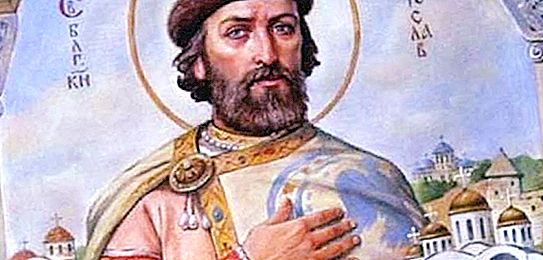
On the historical footsteps
The first and only mention of the book depository is given in The Tale of Bygone Years, it dates from 1037. It says: "Yaroslav loved books, and put a lot of writing in the church of St. Sophia, which he himself created."
For centuries, the library of Yaroslav the Wise has been searched for more than once by many scientists. Some art historians have questioned the existence of the book depository. No other sources confirming his true whereabouts were found.
But at the same time, it is known that Metropolitan Hilarion and Clement Smolyatich knew the works of Plato and Aristotle, philosophers of Ancient Greece and Rome. This can be seen in the analysis of their works “Svyatoslav Izbornik” and “Message to the Smolensk presbyter Thomas.” It is also known that these figures worked on their collections under the arches of St. Sophia Cathedral in Kiev, where the library of Yaroslav the Wise was located.
Another fact proving the existence of the library in the past is the study of the theologian Paul of Aleppo. He visited the book depository of the Kiev-Pechersky Monastery, and in one of his letters he mentioned a large number of scrolls and parchments from the library of St. Sophia Cathedral. The letter dates from 1653.
Mikhail Lomonosov also studied this issue. He expressed the opinion that in Kiev there were also scrolls from the Alexandria Library. Lomonosov was sure that there was stored knowledge brought from India and East Asia, which Europeans still did not know.
How many books were there?
It is not known how many manuscripts were kept under the vaults of the cathedral. Some historians believe that there were about 500, others are sure that there are much more - about 1000. It is known that Yaroslav the Wise loved books and was a polyglot, he could read in most European languages. All texts were first translated from Greek, Bulgarian, Latin, and then manually corresponded and intertwined. During the life of the prince, about 1000 copies were copied. And he began to create his priceless library 17 years before his death.
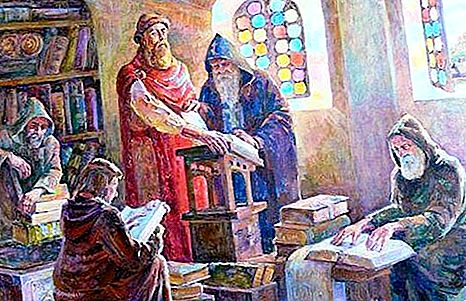
It is worth noting that at the beginning of the 11th century, people did not yet know what paper was. Texts were written on parchments. They were made from the skin of young calves and sheep, which was thinned and dried in the sun. Parchment was an extremely expensive material, since it took a lot of time to make it, and animals were killed in herds to create at least one book. The covers of such manuscripts were real works of art. They used morocco leather, which was decorated with precious metals and stones. Some specimens had diamond, emerald and pearl inserts.
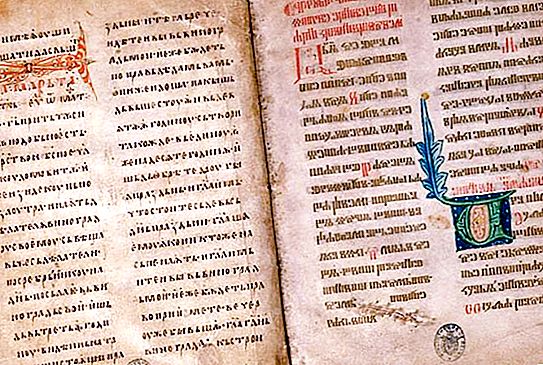
Princely Heritage
The first library of Yaroslav the Wise did not last long. Information about it is lost at the beginning of the 13th century, when the Tatar-Mongols attacked Russia and burned Kiev. According to most historians, it was during this period that the book depository died. At the same time, this could happen earlier, for example, during the Polovtsian raids in 1169 and 1206.
There is a chance that some books still managed to be saved. Largely thanks to the daughters of the prince. The youngest daughter of Yaroslav the Wise, Anna Yaroslavna, was embraced by the French king Henry I. During her departure, she took away some of the manuscript property. One of these books was the legendary Reims Gospel. It is assumed that for seven centuries in a row all the kings of France, including Louis XIV, swore during the coronation of this particular manuscript from the library of Yaroslav the Wise.
The prince had two more daughters, who also became the queens of other ruling dynasties of medieval Europe. Anastasia became the wife of the King of Hungary Andrei I, Elizabeth - the wife of the King of Norway Harold III. Leaving for a new place of residence, the princesses took part of the books with them as a dowry.
Nevertheless, most of the manuscripts remained in Kiev. The library definitely existed until 1054, and then its traces are lost.
Where to look for the library of Yaroslav the Wise?
Yaroslavl seems to be one of the most suitable places where the grand duke could leave his treasures. After all, this mighty city was founded by him and had strong unbreakable walls of the Kremlin. But actually it is worth looking for a library in Kiev.
To date, there are several versions of the possible existence of a secret repository. But not one of them has been officially confirmed.
Version 1: St. Sophia Cathedral
The most logical way is to look for the library where it was founded. But in 1240 during the invasion of the Tatar-Mongol St. Sophia Cathedral was completely destroyed. Ivan Mazepa took up his restoration several centuries later. But no information that a secret vault was found underground was not recorded in history.
In 1916, under the cathedral there was a collapse of soil. Excavating workers found an ancient note in one of the walls, which read: "Whoever finds this passage will find the great treasure of Yaroslav." But further excavations soon ceased. According to documents, to prevent unauthorized treasure hunting.
In 2010, a group of researchers in secret places discovered a huge room underground (at the depth of a four-story building). The studies were carried out using a device called a “radar”, its effectiveness has been repeatedly tested at other facilities. Perhaps, an unknown treasure is hidden deep underground in the Kiev catacombs.
Version 2: Mezhigorye
Children's libraries named after Yaroslav the Wise were opened during the Soviet Union throughout the vast country. But the party authorities were silent about finding another book depository. This is a secret treasure in Mezhyhirya.
It all started in 1934, when in this city a country residence of the first secretary of the regional committee of the party of Kiev, Postyshev, was being built. The territory of the former Mezhigorsky monastery was chosen as the place of work. During the excavation of the pit, a basement was found, completely clogged with ancient books. Then the party leadership ordered to bury the basement, and keep silent about the find.
So it was until the 80s of the last century, when one of the workers decided to open a secret. Around the same time, they began to rebuild the suburban residence for another statesman and again stumbled upon the ill-fated cave. But all attempts by historians and archaeologists to get there were in vain. An urgent state project was ordered to be completed, and the cellar should be buried.
For the whole world, the mysterious cellar, filled to the brim with blackened parchments, remained a mystery.
Name libraries of our time
The Central Children's Library named after Yaroslav the Wise exists in the city of Yaroslavl. But this is not the only book depository named after the grand duke. In Kharkov, at the Law University named after Yaroslav the Wise, there is also a structural unit of the same name.
Today, the scientific library of the Yaroslav the Wise National Law University is a modern youth center where conferences and research projects are constantly held.
Central Children's Library of Yaroslav the Wise
This object is located in the Dzerzhinsky district of Yaroslavl, that is, in the most densely populated area of the city. Address of the central children's library: st. Trufanova, 17, cop. 2. The street is named after the great commander of the Great Patriotic War - Nikolai Ivanovich Trufanov.
Children's Library named after Yaroslav the Wise was founded in 1955. Then the area was called Stalin and it was actively under construction. New schools required the construction of a library. Then the administration of Yaroslavl made a gift to youth: opened a new modern book depository, which included a huge number of books.
Twenty years later, the library system of the city was centralized, and the book depository became known as the Central Children's Library. She united another 15 institutions under her wing, thus becoming a single coordinator of children's leisure.
Only in 2008, the Central Children's Library of Yaroslavl was named after the founder of the city - Yaroslav the Wise. Now her team holds various events, festivals, creative contests, fairs, local history readings, cultural events, etc.

